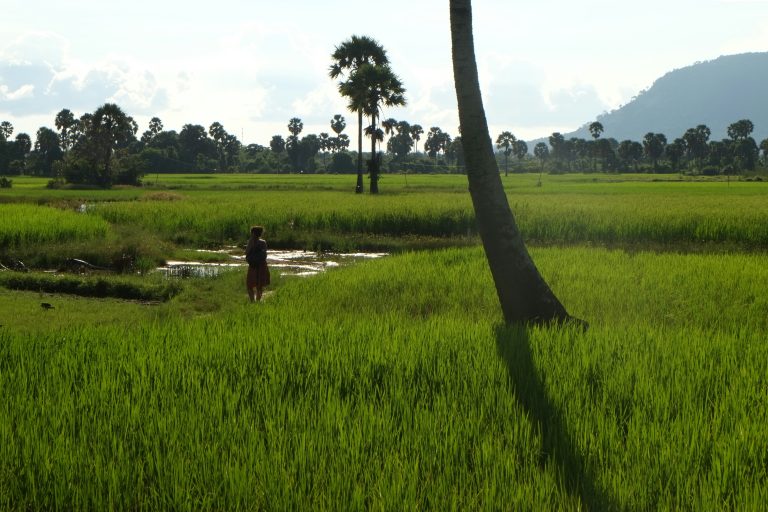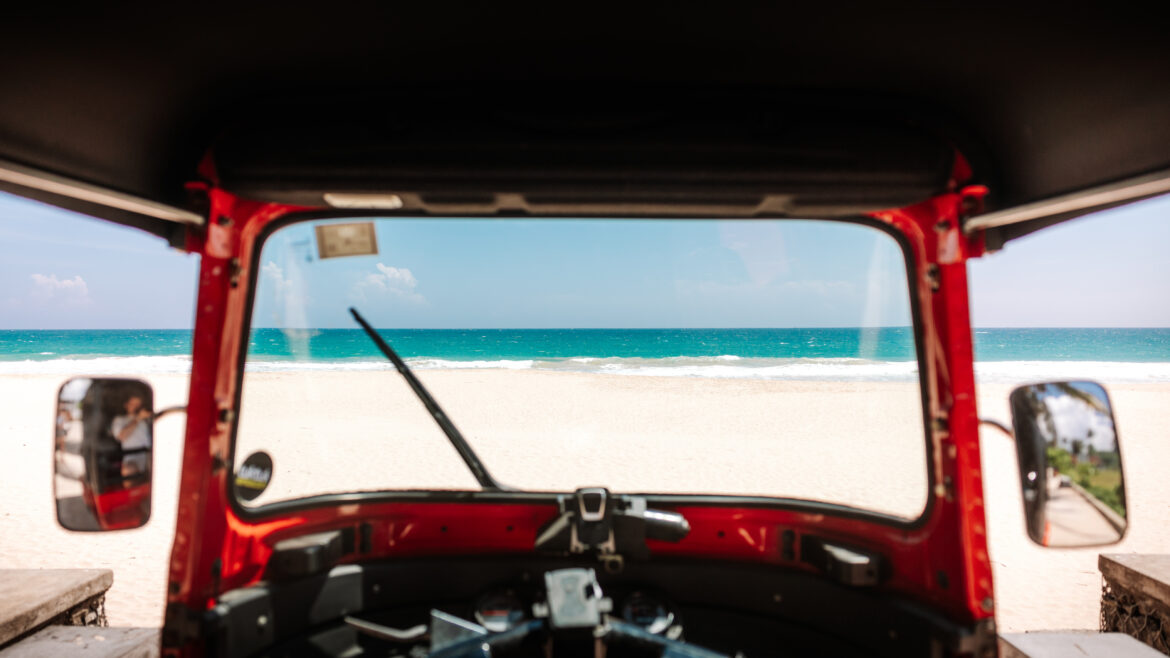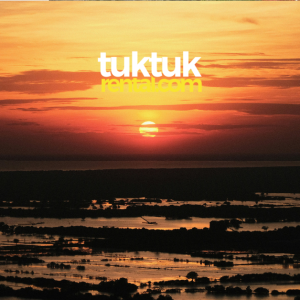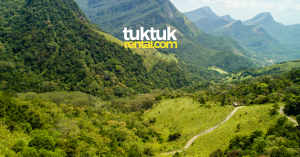Cambodia has a tropical climate characterised by high temperatures and humidity throughout the year. The country experiences two main seasons, the Green Season and the Dry Season. Each is determined by monsoon winds and rainfall patterns.
While temperatures remain fairly consistent, between 25°C and 35°C (77°F to 95°F), the level of rainfall and humidity can vary greatly depending on the season.
Cambodia’s climate offers two distinct experiences, both very beautiful in their own way:
- The Green Season, lush and vibrant, perfect for nature lovers.
- The Dry Season, ideal for temple-hopping and coastal adventures.
Let’s talk about the green season, a favorite of many travelers. This time of year Cambodia becomes lush and vibrant. Absolutely perfect for nature lovers and those who enjoy peace and local life at a slower pace.The waterfalls are magnificent with flowers abound.
Next we have the dry season. It’s marked by sunny skies, lower humidity, and minimal rainfall. A good time for exploring temples, relaxing on the beaches, and trekking in the mountains.
Whichever season you choose, you’ll find warm hospitality, rich culture, and unforgettable experiences, especially in a tuktuk ride through the countryside!
When is the wet season and should I travel?
The Green Season (May to October), once known as the “Wet Season” is when Cambodia transforms into a lush paradise. Temperatures range from 25°C to 35°C (77°F to 95°F), with refreshing rain showers that typically occur in the afternoons or evenings.
Rain showers rarely last long, approximately 20 to 30 mins on average. Making it a great time to tuck into a cosy restaurant, cafe, or trendy bar. Enjoy some of Cambodia’s delicious, always fresh food, along with your favorite beverage. The welcomed rain cools the air and refreshes the landscape. They provide a refreshing break from the heat, making mornings perfect for sightseeing and photography.
The major tourist areas are calmer during this time, so you’ll enjoy lower prices, peaceful temples, and authentic encounters with locals. Making it perfect for those who want to integrate with the culture. Nature is at its most lush and photogenic, perfect for photographers and nature lovers. Fewer crowds mean you can explore Angkor Wat, Battambang, or Kep in a more tranquil peace. Special rates for accommodation and tours make it ideal for budget travelers.The countryside comes alive, waterfalls flow, rivers rise, and wildlife thrives.
Fewer tourists visit during this period, which means lower prices and more peaceful visits to major attractions like Angkor Wat, Battambang, or Kep.
If you love dramatic skies, rice paddies in full bloom, and peaceful temple visits, this is your season.
Travel Tips:
- Pack quick-drying, breathable clothes and a light rain jacket.
- Avoid unpaved roads during heavy rains.
- When driving a tuktuk, use rain flaps or pull over until the rain eases.
Highlight: Fish Island, Kampot, becomes a photographer’s dream during the Green Season, fields shimmer in every shade of green.

Okay, and what about travelling in the dry season?
The dry season lasts from November to April and is characterised by cooler temperatures ranging from 20°C to 35°C (68°F to 95°F). The coolest period is between November and January, offering comfortable weather for sightseeing, beach trips, and temple exploration.
Rainfall is minimal, skies are clear, and days are bright. This is perfect for outdoor adventures, like hiking, quad tours and elephant encounters. Although, the elephants love year round visitors.
This is Cambodia’s peak tourist season, especially around major festivals and holidays, so expect higher demand and busier attractions. Book accommodation, tuktuks, and tours in advance to secure the best rates and availability.
The dry season is ideal for exploring:
- Angkor Archaeological Park in Siem Reap
- Beaches in Kep, Kampot, and Sihanoukville
- National parks like Bokor and Cardamom Mountains
The Dry Season is a great time to travel for many. With weather for temple-hopping, island-hopping, and long tuk tuk drives. Crystal clear skies make for amazing photos and sunsets. The dryer roads make for easier travel logistics and comfortable driving conditions.
It also coincides with Cambodia’s major festivals, adding cultural excitement to your trip.
If you enjoy the hustle and bustle of lively Cambodia, filled with fellow travelers, who are also seeking adventure, then the dry season is for you!
Cambodia’s climate: Two Seasons, Two Adventures!
When are the key events in the Khmer year?
International New Year Day – January 1st
Modern festivities and parties across Cambodia, marking the start of the Gregorian calendar year.
Victory Day (Victory over Genocidal Regime Day) – January 7th
Commemorates the end of the Khmer Rouge regime in 1979 with ceremonies and remembrance activities.
River Festival – Mid-March
Celebrates Cambodia’s rivers with boat races, cultural performances, and community events in various provinces.
Vesak (Visak Bochea) – April/May
Buddha’s birthday, celebrated with religious ceremonies, offerings, and merit-making activities.
Buddha’s Birthday in Cambodia (Part of Vesak) – April/May
Celebrated as part of Vesak, with rituals, prayers, and offerings at temples across the country.
King Sihamoni’s Birthday – May 14th
A national holiday with various public events and cultural performances in honor of the King.
Angkor Marathon – August
An international marathon held at the Angkor Wat temple complex, attracting runners from around the world.
Cambodia Beer Fest – October
A lively event celebrating Cambodia’s beer culture, featuring tastings, live music, and entertainment.
Commemoration Day of King Father, Norodom Sihanouk – October 15th
A day of national ceremonies and tributes honoring the memory of the late King Father.
Kampot Readers and Writers Festival – November
A literary and cultural festival in Kampot, attracting writers, poets, and readers for workshops, readings, and discussions.
The Water Festival and Khmer New Year are the most culturally immersive events — book accommodations early as demand spikes nationwide.
Cambodia’s festivals beautifully reflect its Buddhist roots and ancient traditions. Here’s a list of key annual events to help you plan your trip around them.
Updated for 2025: Dates can shift slightly each year, so always check before traveling.
What clothes should you wear, any other tips?
Cambodia Packing Guide 2025:
- Lightweight, breathable fabrics are essential year-round due to humidity.
- During the wet season, choose quick-drying clothes and carry a light rain jacket.
- Opt for comfortable waterproof shoes — streets can become muddy during rains.
- Always dress modestly when visiting temples or religious sites — cover shoulders and knees.
Additional Tips:
- Stay hydrated, always carry bottled water.
- Use sunscreen and wear a hat during the dry season; UV levels are strong.
- Insect repellent is useful during the wet season, especially in rural areas.
- If you’re exploring by tuktuk, pack a light scarf to protect yourself from dust and sun. Most roads across Cambodia are now paved, but in the countryside, you might still hit about 10–20 km of dusty stretches.
Ready to make your Cambodian adventure unforgettable?

Related Articles:




2 Comments
by Marieke
Hi!
Me and my partner are thinking about a roadtrip with a tuktuk in Cambodia in july, but we are a bit hesitant about the weather.
We don’t mind heavy rain pour in the afternoon or evening, but it would be a shame when it’s raining most of the time.
I know you can’t predict the weather, but can you tell me about the experiences of other tuktuk travelers in the rainy season?
Kind regards, Marieke
by Wietse
Hi Marieke,
Great to hear you’re considering a tuktuk adventure in Cambodia! From our experience (we only opened her last year in June) we found that it was mostly afternoon storms which were heavy but lasted for c.1 hour during the rainy season. Sometimes these were heavier and longer at night. We didn’t find it had any negative impact on our customers and of course our vehicles include rain flaps as well. Obviously we can’t guarantee or predict the weather but this was our experience for 2024
It’s definitely doable. Let us know if you have any other questions!
Kind regards, Romesh